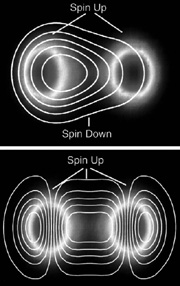Although quantum computing is perhaps decades away from the application stage, a team of scientists in Australia announced this week that they have made progress in the field

Although quantum computing is perhaps decades away from the application stage, a team of scientists in Australia announced this week that they have made progress in the field.
The strange properties of the quantum world may allow any quantum computer to operate at speeds and powers far greater than today's computers.
While classical computers process binary signals of data, quantum processors use quantum bits or qubits that encode the quantum state of particles such as atoms, photons and electrons. Since these particles can be in several states at the same time, the qubits will allow a large number of calculation options to be performed simultaneously.
However, these particles are sensitive to disturbances from the outside world, unless they are kept completely isolated, their quantum information leaks, this situation is called "decoherence".
Last week, Robert Clark from the University of New South Wales in Sydney announced that he had discovered a qubit of a silicon chip, together with a mechanism for reading the quantum state, and it seems that he has solved the problem: "This was considered impossible only a few years ago," Clark said at a company meeting British Royal in London.
The reading device (UNSW) is based on a master plan and diagram published in 1998 by Bruce Kane from the University of Maryland. Kane used two phosphorus atoms inside a silicon crystal. The quantum states of the atoms are extremely long-lived, so the hope is that they will serve as qubits that do not reach a state of decoherence. A large array of such chips would enable useful quantum processing.
The construction of Kane's device requires that the atoms be implanted inside with the utmost precision, and the researchers are skeptical as to whether this is possible. However, working with a team at the University of Melbourne, Clarke and his colleagues were able to plant phosphorus atoms inside the silicon chip by focusing a high-energy beam of phosphorus ions into the chip.
Now they have located the location of the atoms inside the chip, and shown that their quantum state can be read using a sensitive transistor built from a single electron. The only difference from Kane's diagram is that they use charge states rather than information about the rotation of the atom to process data.
Clark believes that his device can be upgraded to build arrays of qubits, and he hopes to succeed in the task by 2007. One of his goals is to run Grover's algorithm, a quantum database search engine that will be much faster on a quantum computer than on a standard computer.
At the same meeting, Rainer Blatt from the University of Innsbruck in Austria announced that his team was able to perform a quantum calculation using a captured calcium ion. This is the first calcium atom built on a system proven to be in a quantum state.
The team in Innsbruck ran the Deutsch-Josza algorithm on their processor, which checks the state of an imaginary coin that sometimes has two equal and sometimes different sides. A quantum computer can simultaneously check both sides of the coin and therefore in theory can run the program in half the time.
